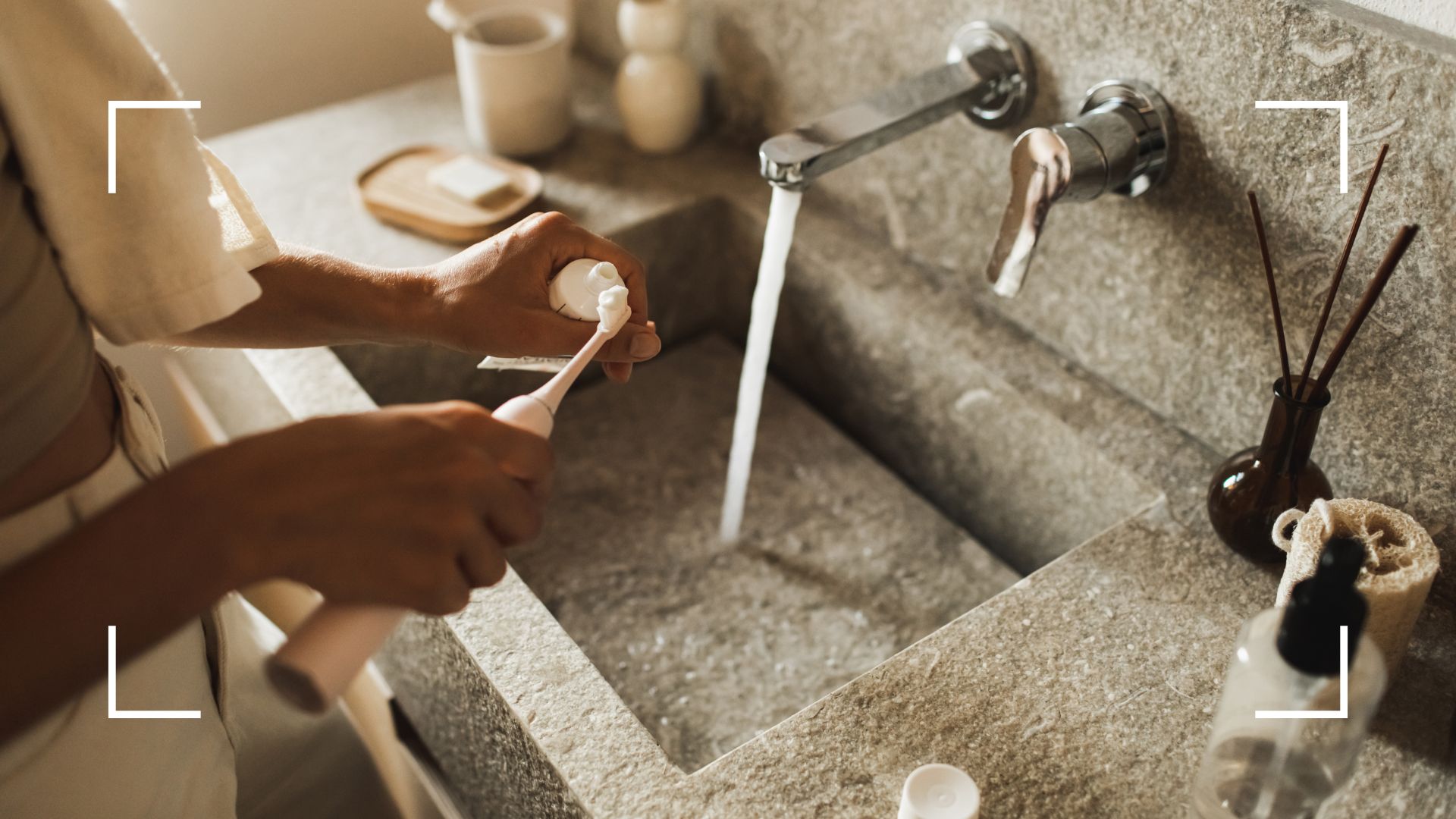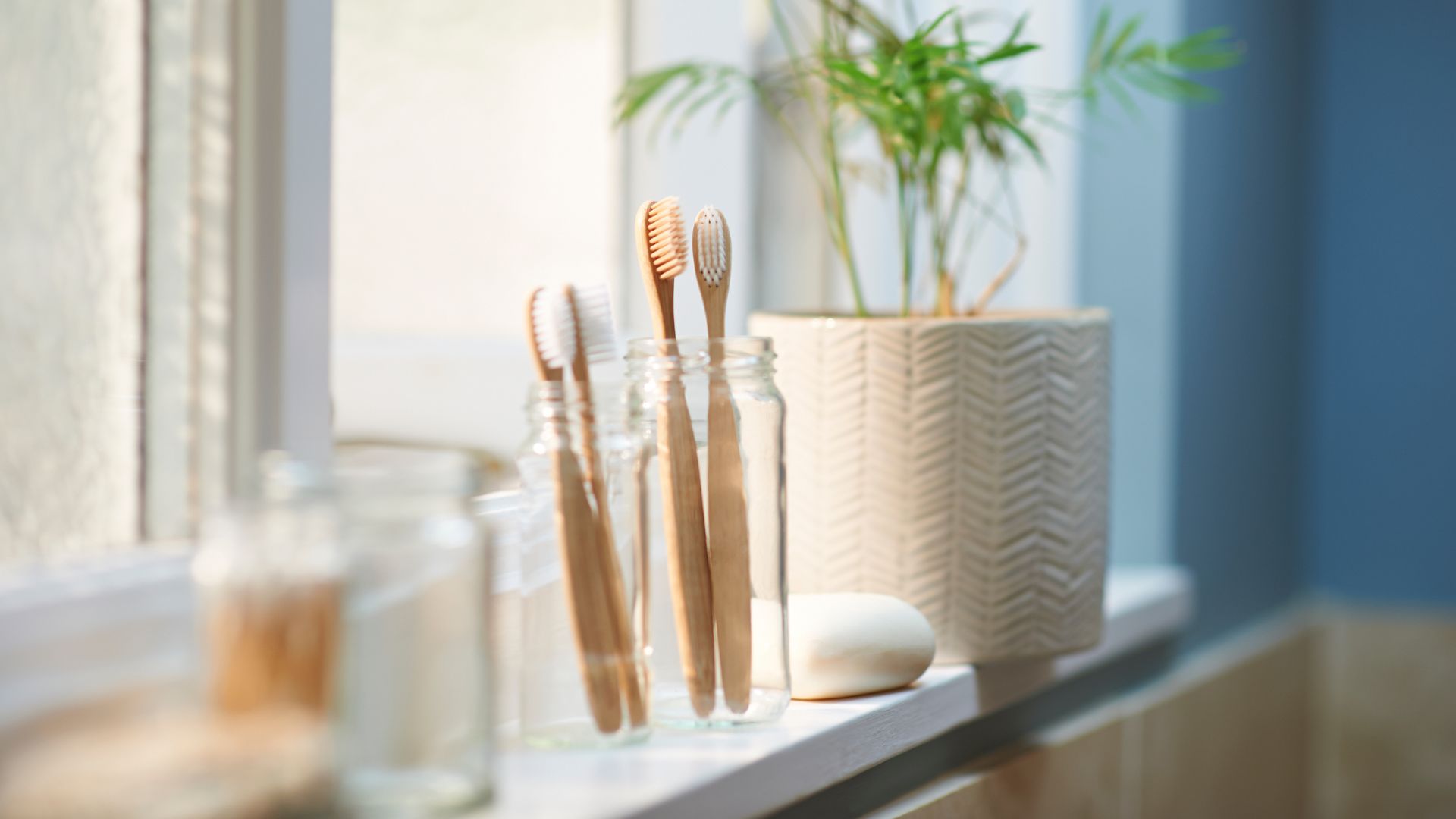
Major changes to the colour or texture of your teeth can be a concerning sight but if you're wondering 'why are my teeth turning brown?', you may be comforted to know you're not the only one with this problem. Brown tooth staining is one of the most common cosmetic dental issues around.
Most people associate brown tooth staining with habits like smoking, but that's not always the case. Brown lines, blotches, spots or patches on your teeth can be down to a whole host of other causes - some serious, some not so much.
The good news is that most brown tooth stains can be fixed with one of the best electric toothbrushes and a pea-sized amount of the best toothpaste. Here, woman&home speaks to two cosmetic dentists to reveal what exactly causes this issue, what you can do about it, and whether it's something to worry about.
Why are my teeth turning brown?
1. Tanins
Intensely coloured compounds within food and drink, known as tannins, may be to blame for any changes you see in the colour of your teeth. "They can cause surface and/or internal staining," explains Dr Sahil Patel, a cosmetic dentist and the founder of Marylebone Smile Clinic.
"Typical culprits are red wine, turmeric, heavily spiced foods, beetroot and tea or coffee," he says.
2. Genetics
Unfortunately, you may be more prone to having brown or yellow teeth if others in your family have suffered from the same problem. "Occasionally, there can be a malformation in the multiple layers that make up the tooth structure," says Dr Patel. "An illness, malnutrition or injury can cause this at a young age, or it is genetically inherited from your parents."
3. Nicotine and tobacco
We all know that smoking can damage our health and if you've seen the warnings on the front of a cigarette packet, this one will be no surprise to you. "Nicotine and tobacco are also a common cause of surface stains on teeth," says Dr Mani Bhardwaj, the principal dentist and clinical director of The Smile Studios Dental Group.
Although, it's not just cigarettes that can be the reason why your teeth are brown. "While vaping does stain teeth noticeably less than traditional cigarettes, as cigarettes contain high levels of tar and vapes remove the presence of tar, the artificial flavourings, and the sticky aerosol in vape liquids can worsen the appearance of your teeth," he notes. "When you inhale a vape, the negative effects on teeth mostly hit the front teeth where the inhalation occurs from the device."
3. Hygiene
Knowing how often to change your toothbrush and how to brush your teeth properly is essential if you want to avoid or limit tooth staining. "Daily cleaning assists the gum health initially, but it also removes surface stains from the teeth. If areas are missed or a worn down toothbrush is used, we typically see higher levels of staining internally and externally," says Dr Patel.
4. Decay
Many causes of brown tooth staining are superficial and only cause extrinsic damage, meaning the stains are only on the surface of the teeth. However, in some cases, brown teeth can be caused by intrinsic staining and tooth decay, which means the damage is deep in the tooth enamel. In this case, you may suffer from other dental issues, like sensitive teeth, as well.
"When the tooth initially starts to decay, the dentine layer begins to rot under the enamel, leading to tooth cavitates, resulting in denting becoming stained over time and eventually turning dark brown, which is a classic sign of tooth decay," says Dr Mani.
5. Mouthwash
Some types of mouthwash, particularly those that work to tackle plaque and gingivitis, can cause some light surface brown stains. These stains often appear at the top of the tooth, just below the gum line where you normally brush.
Mouthwash guilty of this often contains a chemical called chlorhexidine. When traces of the food we eat mix with the antiseptic properties in this chemical, Bristol University Dental School says it often causes brown stains.
What medical conditions can cause brown teeth?
In other cases, brown teeth can be caused by certain medical conditions. The most common include metabolic diseases, vitamin deficiencies, liver disease, eating disorders, and celiac disease.
Fluorosis can also be why your teeth are turning brown, Dr Mani says. "This is where excessive fluoride has been ingested and it has caused disruption to the enamel formation, which can also potentially lead to brown and white spots appearing on the teeth." This tends to occur in the first few years of life. However, if you're experiencing brown teeth staining for the first time as an adult, it's probably not the cause.
Some medications can also lead to brown stains on teeth, so always check the side effects on the pamphlet. For example, tetracycline has been commonly associated with tooth staining and this is a common ingredient in many medications for bacterial infections.

How to get rid of brown stains on teeth
- Good oral hygiene: Staying on top of how often you brush your teeth can help with staining issues, says Dr Patel. Replace your toothbrush regularly and always use one of the best toothpastes with fluoride as a natural ingredient and make sure your brush is a good one. Our guide on the best Oral-B electric toothbrushes can help if you need a new one.
- Professional cleaning: Many people want to know how to whiten teeth at home - but a professional clean is the first step in this process. Most people need a professional clean every three to six months but if you have a serious issue with brown staining, your hygienist may suggest a visit more frequently. "If staining occurs due to food and beverage consumption or debris, brown staining can be removed through hygiene treatments, such as scaling and polishing or airflow treatments," says Dr Mani.
- Restorative care treatments: If your staining is embedded within the tooth, you'll need more serious treatment. "Restorative care like prosthesis, crown fillings, and veneers are some of the additional treatments that may be required," says Dr Mani.
- Whitening toothpaste: Some of the best whitening toothpaste contains baking soda or other light abrasive materials. These materials, according to multiple studies by the likes of Dalhousie University, are suggested to help remove light, superficial staining on the surface of the teeth. However, these studies don't often examine the effect these abrasive materials have on the tooth enamel. Always speak to your dentist before using a new product on your teeth.
Should I be worried about brown stains on my teeth?
The experts agree that, for the most part, brown stains on teeth are a cosmetic concern rather than a medical one. However, Dr Mani notes, "If [brown stains are] found within the body of the tooth, this can be a signal of health concerns, and can lead to long-term damage and more serious issues to your oral health."
An important part of good oral hygiene is avoiding, and being on the lookout for, brown spots on the teeth, he adds. "Brown spots can be an early warning sign of decay which will need to be treated by your dentist, so if you have any concerns about your oral health, always consult with your dentist as soon as you spot changes to your teeth and gums. Your dentist can advise the best treatments and prevent any long-term complications."
What's the difference between brown and white stains on teeth?
- White stains: These are down to hypo calcification, fluorosis or a condition called molar incisal hypomineralisation (MIH) more often than not, says Dr Patel. "These are conditions that present at a young age or have other causes that dentists do not precisely understand." They present as white patches on blotches that can be more obvious depending on the natural colour of your teeth.
- Brown teeth: MIH and fluorosis are also causes of brown teeth, notes the dentist. "They are due to the malformation of the enamel and/or dentine, resulting in greater uptake of colours and tannins creating a more noticeable chroma or saturation," he says. As the colour suggests, these appear as brown lines, blotches or spots on the teeth.



!["[T]he First and Fifth Amendments Require ICE to Provide Information About the Whereabouts of a Detained Person"](https://images.inkl.com/s3/publisher/cover/212/reason-cover.png?w=600)



